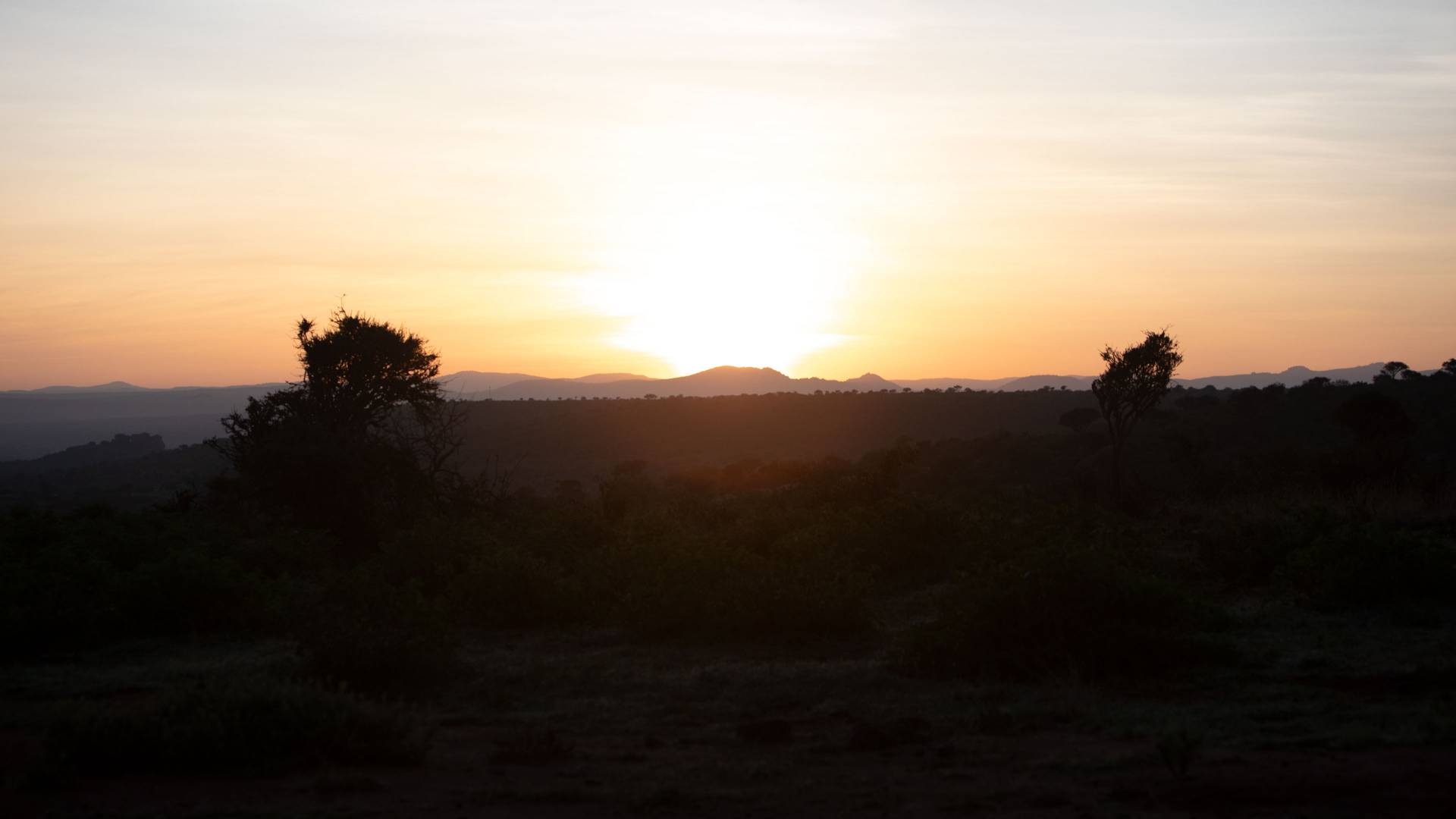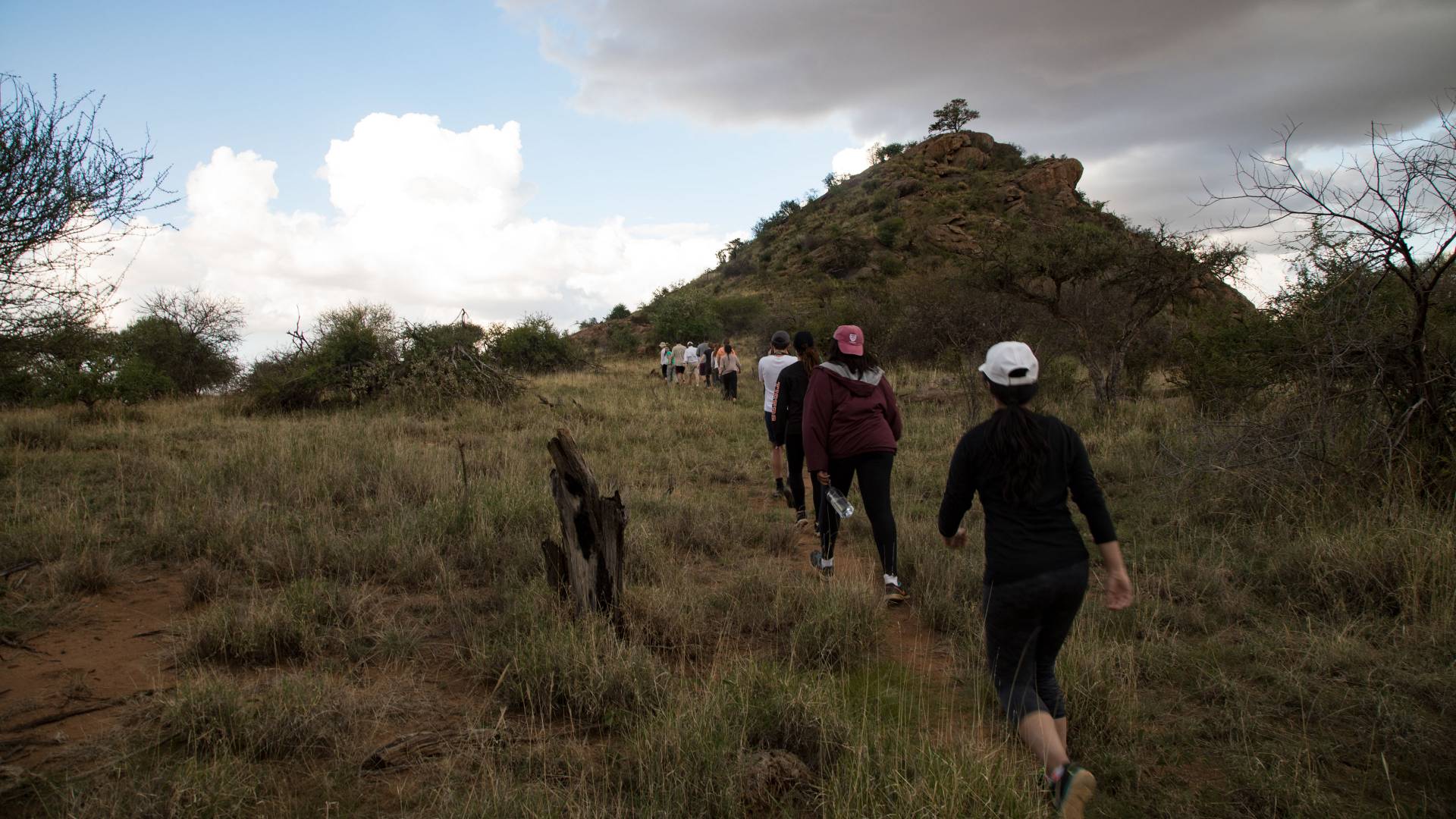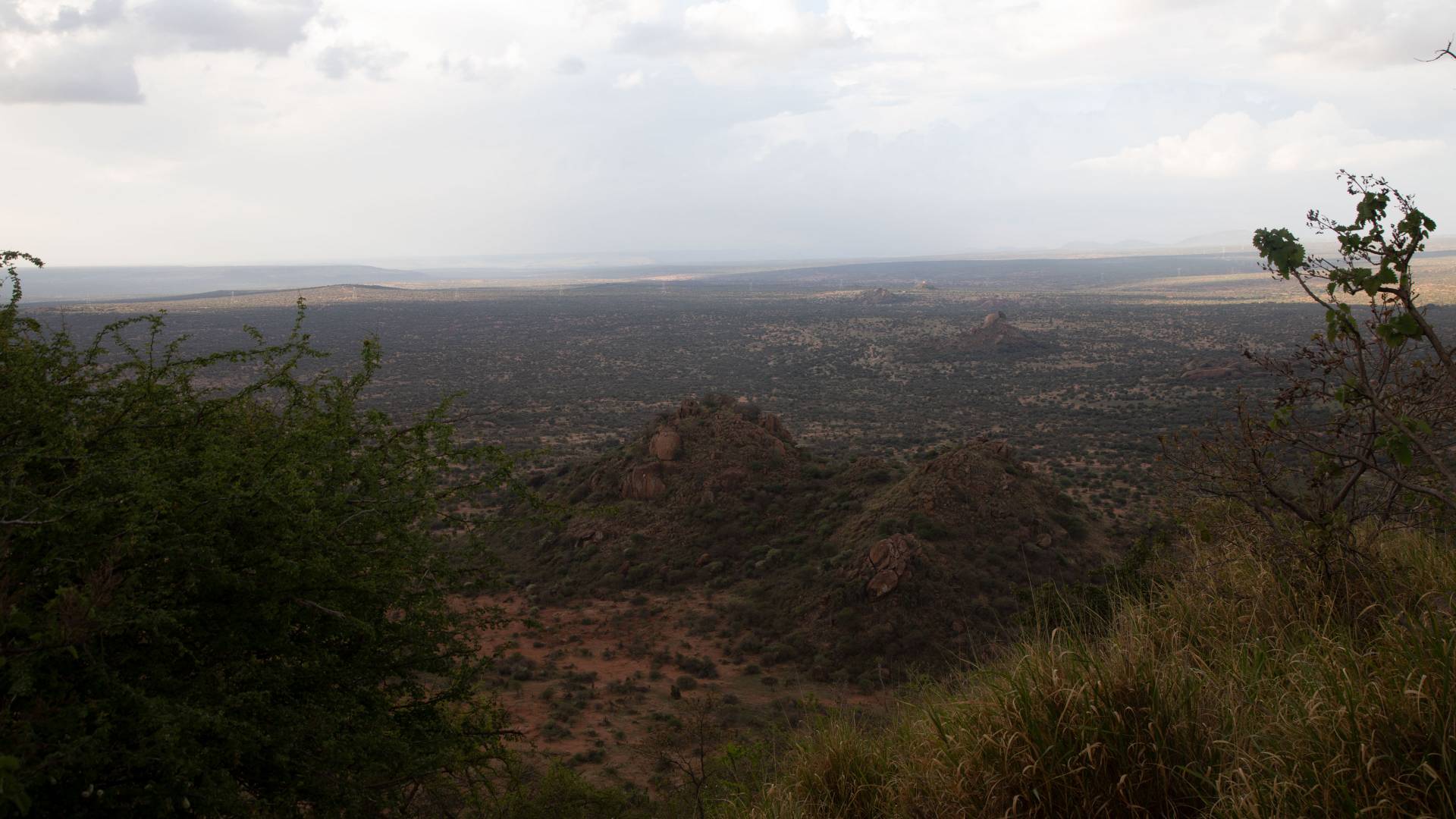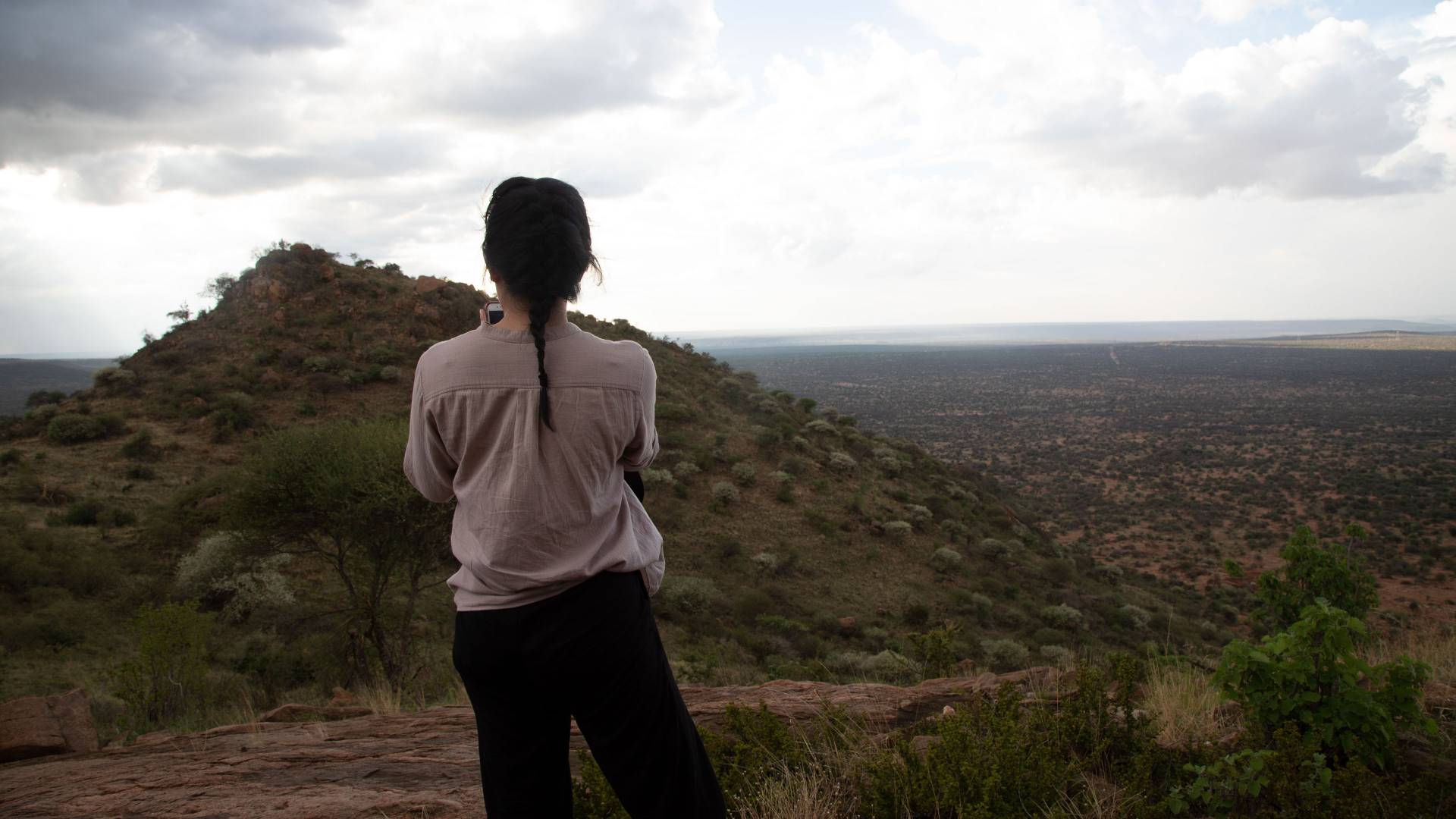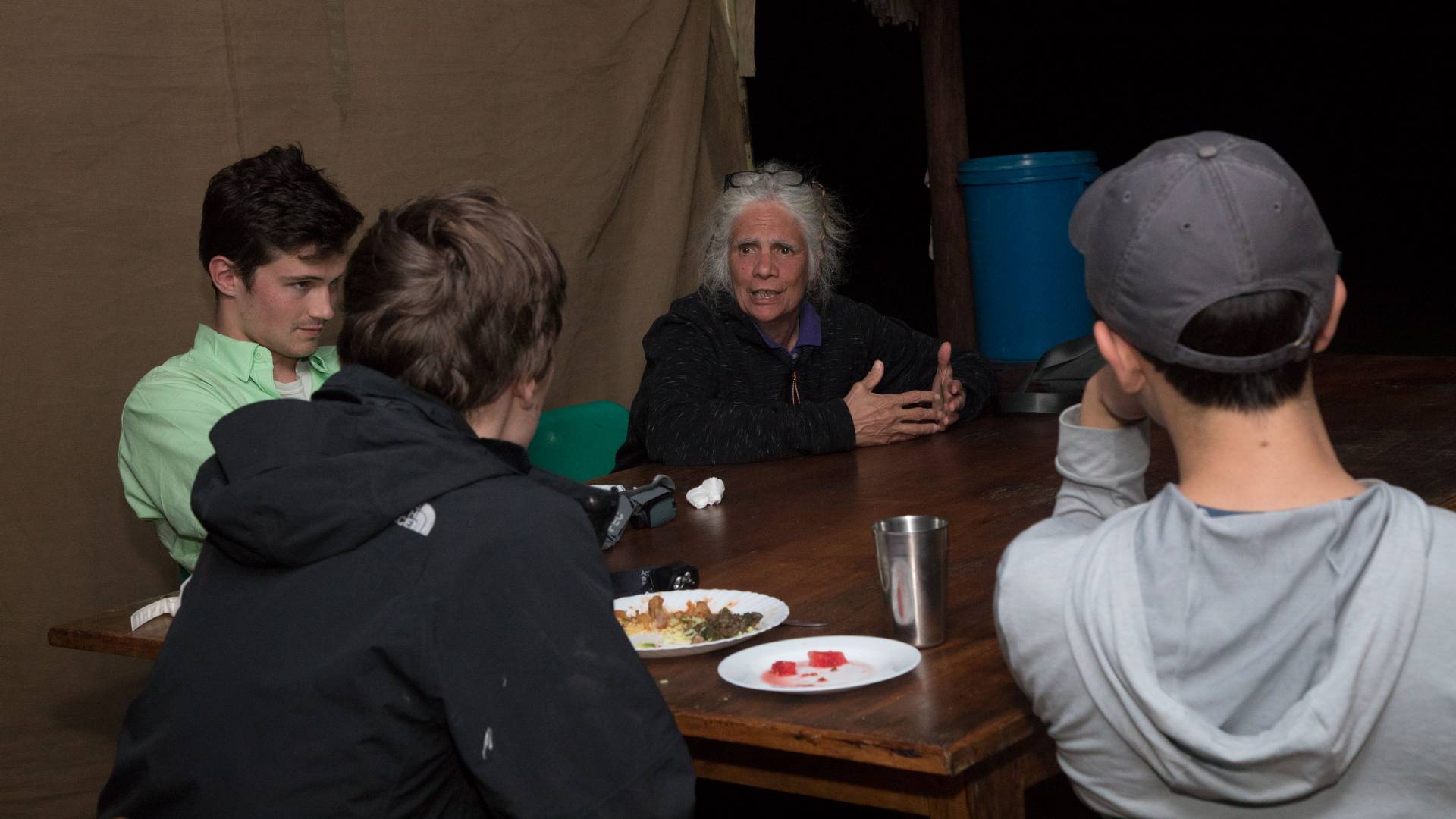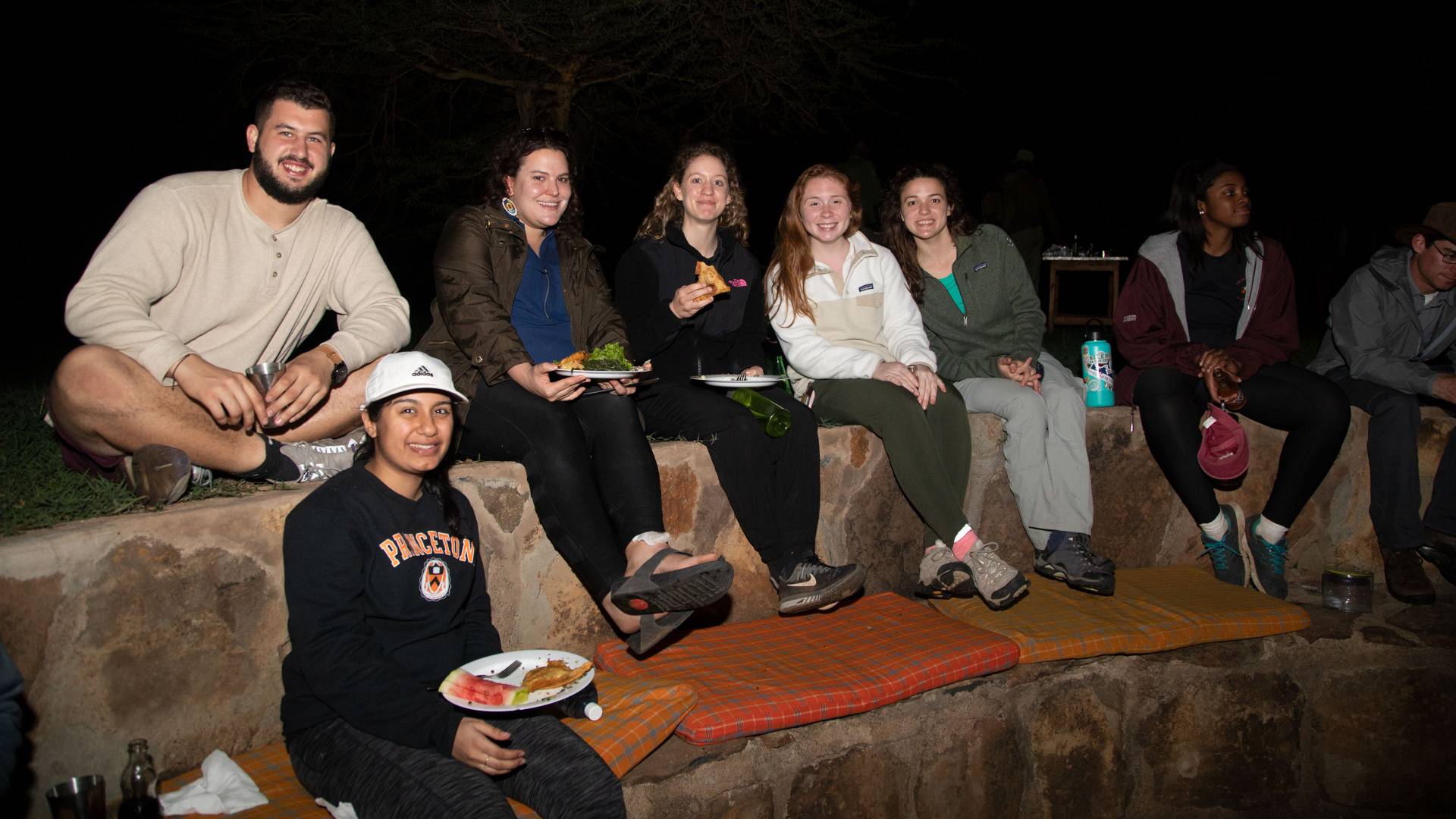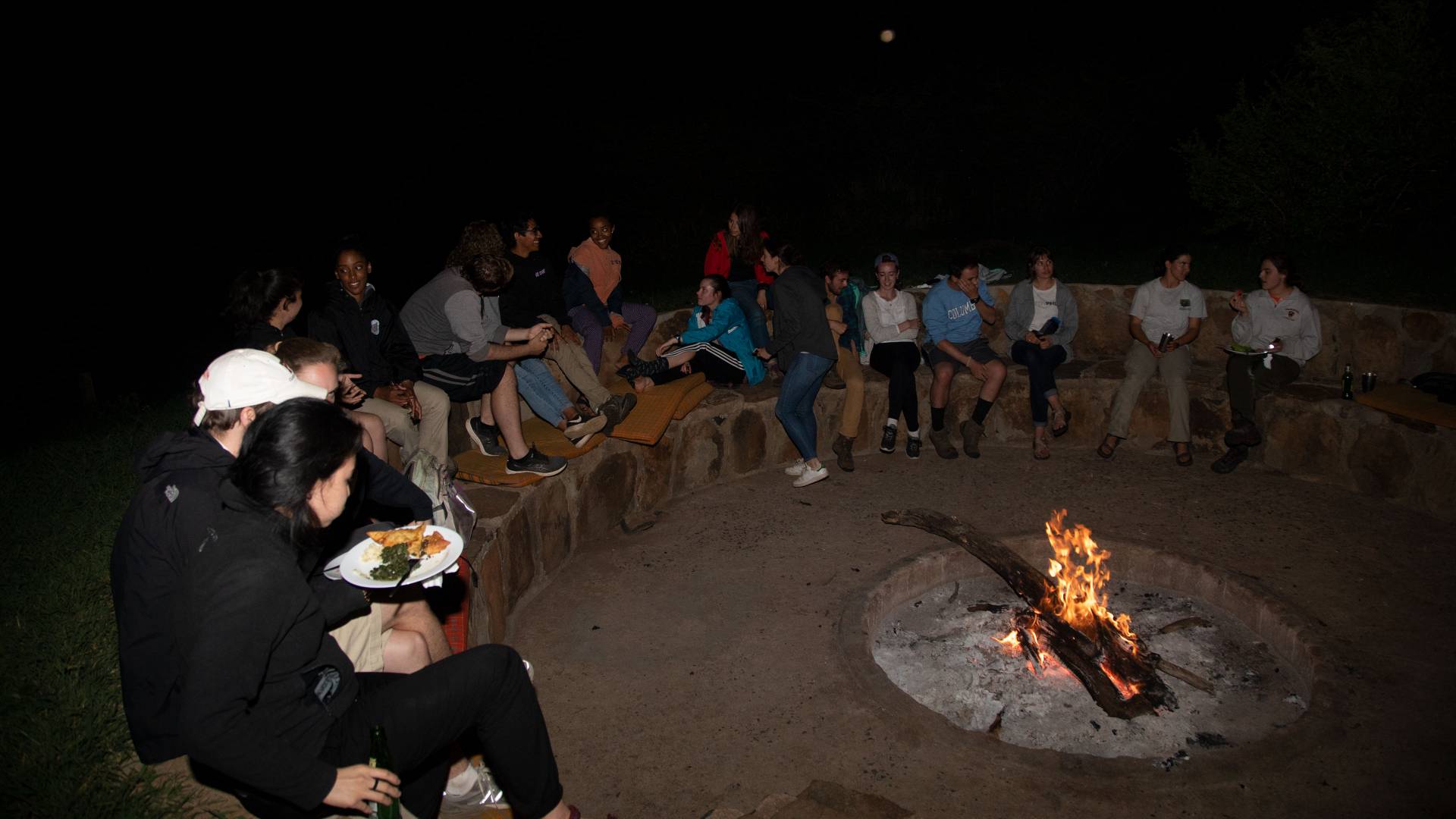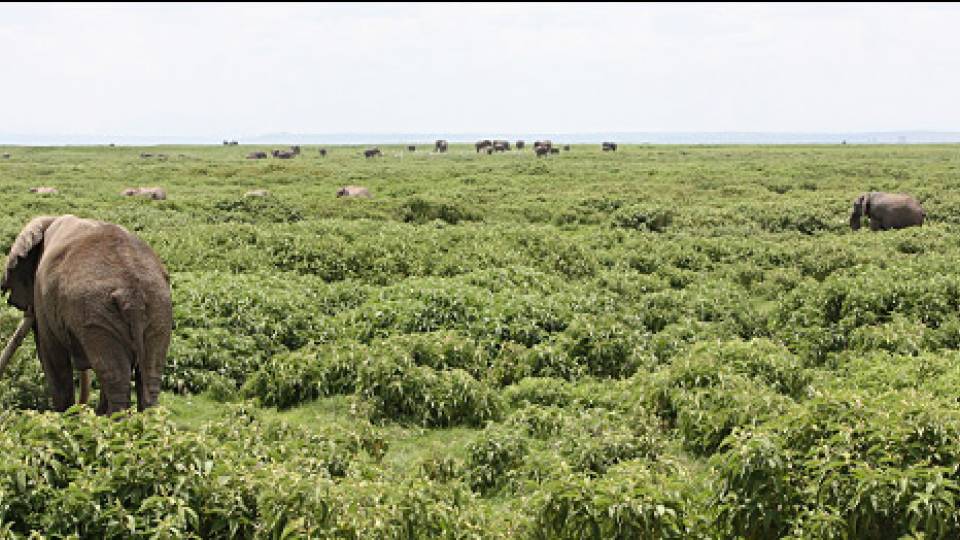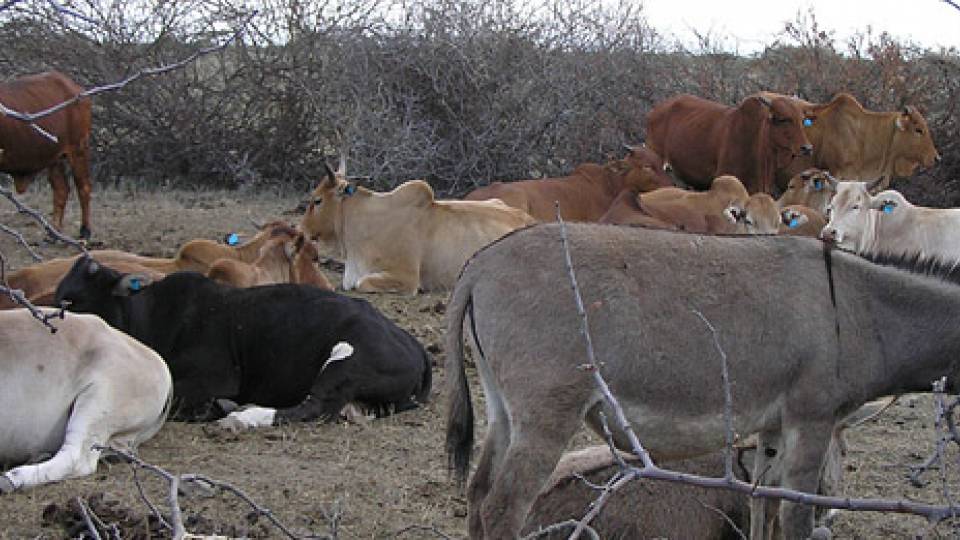"Never underestimate cultural barriers," said Janet Monge, a visiting professor in anthropology, to the 50 students in her "Human Evolution" course in late February — three weeks into the spring semester at Princeton.
Unpacking terms such as “speciating” and “survivability,” comparing the work of Darwin and Stephen Jay Gould, and outlining the basics of taxonomy, Monge steered the lecture toward a consideration of what culture is and how we come to understand it.
Over spring break, 15 students from the course who were interested in delving deeper into that question traveled to the Mpala Research Centre in Laikipia County in central Kenya. The 48,000-acre conservancy is home to large populations of wildlife and to communities of pastoralists including the Maasai, Samburu, Borana, Gabra and others who live off the livestock they raise. At Mpala, Princeton students have an opportunity to connect directly with cultures that date back tens of thousands of years — and to learn about and participate in collaborative solutions to contemporary challenges related to climate, conservation and human-wildlife conflict.
The "Human Evolution" course offers a "full frame of human evolution … from first appearance probably about 6 or 7 million years ago up to the present,” said Monge. “Kenya and East Africa is the origin of our lineage so these environments are really key to understand humans in total.”
Princeton University serves as managing partner of Mpala, working in close partnership with the Smithsonian Institution, the Kenya Wildlife Service and the National Museums of Kenya.
For students who have never been in this kind of setting, the trip to Mpala "is a mind-altering experience that changes their worldview," Monge said. "I have great hopes that in 20 years I'll be getting emails from these folks telling me how it played out in their lives," she said.
Monge, who has taught at Princeton since 2008, has been traveling to Kenya for more than 20 years to teach and pursue research. She and Dino Martins, a visiting lecturer in ecology and evolutionary biology and the executive director of Mpala, led the spring break trip. Martins came to Princeton in April to give four lectures on the agricultural landscape of East Africa — from the evolution of food production by early humans to the cultivation issues facing farmers in Kenya today.
Below are highlights from a day at Mpala.
5:12 a.m.
"At the river camp, you can hear the elephants at night and hear them crushing little trees as they're walking, and we hear a lot of hippos. It's an amazing experience going to sleep and listening to the wildlife around you." — Morgan Nicolao, Class of 2020
In the deep quiet of the pre-dawn, a family of elephants huddles together by the river. Barely visible behind a scrim of morning mist, they move slowly, like a giant kinetic sculpture.
The first sliver of the rising sun cracks the darkness open. In the distance, the serrated outline of Mt. Kenya gradually comes into view.
Farther down the river, the hippos loll in the muddy water; when they yawn, their mouths open wide to reveal an enormous pink palate. A pair of monkeys hopscotches across the canvas roofs of the students’ tents at the Ewaso Nyiro River Camp. The zebras utter their distinct harrumph. No alarm clock needed. Morning at Mpala has broken.
6:23 a.m.
"The crowning jewel of [Mpala] is looking at the natural experiment of this environment, including looking at the animals. Human-animal interactions are one of the most key things to understand about human evolution. How do you explain that interaction without having that firsthand experience? The game drives [are] a crunch lesson in understanding all kinds of animal behavior and that was really eye-opening, I think, for the students." — Janet Monge
Leaving their mosquito-net-covered beds in the still-darkness, the students pull on jackets and sweatshirts to ward off the morning chill. They pile into Land Rovers and vans that bear the wear and tear of having driven over the deeply rutted, rocky dirt roads of the reserve for years. The Land Rover in the front is driven by Tenai, one of more than 300 staff members, researchers, research assistants and administrators at Mpala. Greeting the students in Swahili with a warm “Habari za asubuhi” — good morning — he pulls a faded red baseball cap bearing the logo of the 2008 Beijing Olympics low over his brow and throws the Rover into gear with a grinding clunk. The cap? It’s the gift of a friend who comes to visit from time to time, he says.
Tenai maneuvers the Land Rover on and off the road, his eyes darting from left to right. He stops suddenly and cuts the loud, gurgling engine. Silence. Tenai takes his left hand off the gear shift, wordlessly gesturing toward a patch of acacia trees, his knuckles grazing the dirt-stained windshield. “Impala,” he whispers, like a parent loathe to wake the baby. All eyes turn to catch a herd of impala, their regal brown heads and distinctive black stripes on the backs of their thighs just visible among the branches, a bas-relief gilded in the morning light. They are gone in a blur, a muffled pounding of hooves against the soft earth. Later, the students learn there is one particular kind of acacia tree that thrives at Mpala; four species of ants defend it against herbivores like impala and elephants.
Tenai throws the Land Rover back into gear. The mud-caked wheels spin for a moment, then lurch forward, spitting dirt into a cloud. After passing a herd of zebras, their heads bent low and tails swishing as they wrangle a morning bite of bark, fruit and leaves from the bush, Tenai stops the Land Rover short. He raises a finger to his lips, then points out the driver’s side window. He says, simply, “Owl.” High up in a tree, its outline barely discernible, an owl peeks its pale head out of the nest, a riot of curly twigs tucked into the crook of a high branch. Nestled in the grass beyond, down by the river, a baby monkey jumps up to catch a ride on its mother by hugging its belly to hers.
There are no stop signs on the roads of Mpala; animals have the right of way. A lone giraffe stands perfectly still in the middle of the road. Five minutes pass, maybe more. It doesn't matter; Mpala time is “polepole,” slow. The giraffe turns with a sudden shake of its long spotted neck and runs away.
9:38 a.m.
"Mpala is home to many different scientists working on many different things, from ants to elephants, from water to climate change, from soil to community issues, health to livestock, bees to camels, farming to environmentalism. It's important for students to see ... that there's a fundamental connectedness to all kinds of knowledge." — Dino Martins
Inside a classroom at the research center, students hear presentations from several scientists. Outside the open windows, flocks of guineafowl — their black-and-white feathered wings opening like a tuxedo jacket to reveal a ruffle of royal blue — scuffle about in the patchy grass, pecking for food. Dik-diks — a species of tiny antelope that spend their lives in pairs — hop about, darting from rock to tree. The fine silt they stir up floats invisibly through the classroom windows, settling into the shoelace holes of the students' sneakers and boots, into the creases of their open notebooks, into their belt buckles.
In one project, scientists are studying the interaction between domestic dogs and wildlife. They have undertaken a vaccination outreach program to prevent rabies, which affects people, livestock and wild dogs. They discuss their efforts in educating the communities in and around Mpala about the importance of vaccination.
Another project is focused on the effects of climate change on food security. Since 95 percent of crops in the region are rainfall-dependent, if farmers are not able to irrigate their fields, their crops will suffer during a drought. The researcher explains strategies they are developing with farmers from a sample of small farms in Kenya and Zambia.
In the last presentation, the project leader on a research team that studies the social hierarchies of animals summarizes the data they collect from GPS collars on a group of baboons. The collars track collective behavior including dominance and group decision-making.
2:42 p.m.
"It's difficult for us to understand the life of a pastoralist. For these folks everything is about the animals — they move in concert with the animals, they think about the animals, the animals are their baseline wealth. It's a human capital that we have lost track of in the world. That's been very eye-opening for the students. We get an accurate sense, being here at Mpala, as to what [the pastoralists'] challenges are." — Janet Monge
The students pile into two mini-vans for the 30-kilometer drive to visit the homestead where Jackson Randa, a research assistant with the team that studies Grévy’s zebras at Mpala, lives with his extended family, including his wife and daughter, his parents and grandparents.
Several kilometers past the wide modern bridge at the northern border of Mpala, near where the Ewaso Nyiro and Ewaso Narok rivers meet, the mini-vans reach Il Motiok, one of several group homesteads situated on the Naibunga Conservancy.
As the students enter through an opening in a simple fence at Jackson’s homestead, they are greeted by a large group of women singing a song of welcome and dancing, their bare feet stamping out patterns in the dirt. With open arms and warm smiles, they reach out their hands, inviting the students into the joyous circle. Young children, some holding the hands of even smaller children or carrying toddlers on their hips, step forward to shake hands and exchange a shy “jambo” — hello.
Living in sturdy mud huts, the families raise cows, goats, sheep, donkeys and chickens. The women buy beads and wire from a market 20 kilometers away and make jewelry to sell. With the money they earn, they buy corn flour, rice, beans, clothes and shoes. Today, they have spread out their beaded jewelry — and the little wooden figurines of giraffes, lions and other animals Jackson's grandfather carves — on blankets on the ground.
Jackson introduces his baby daughter to everyone. He takes the students, in groups of three and four, inside one of the huts and explains how they are built — always by the women. The frame is made from timber poles fixed into the ground. In between the poles, smaller branches, sticks and reeds are plastered with a mixture of water, mud and cow dung. The roof is also plastered with cow dung and covered with a thick thatch of grass collected in the bush. The cow dung is what makes the roof waterproof. It is completely dark inside.
Many of the students buy earrings, bracelets and other beaded treasures. At the end of the afternoon, there are plenty of hugs and rounds of “kwaheri” — goodbye, and “asante sana” — thank you very much.
5:25 p.m.
"It's one thing to read [something] in a textbook, or a professor delivers it in a lecture, using slides, it's very different being in the place and experiencing it and seeing how things are in real life. ... I'm really happy to be here." — Pablo Bickenbach, Class of 2021
There is one important stop on the way back to Mpala. A one-mile hike up to the top of Mt. Mukenya, one of several small mountains that break up the flat land. The terrain is rocky and steep, with some paths reaching skyward at a 60-degree angle.
At the top — the highest point of the Mpala ranch — the students stand on huge boulders, taking in the view. It’s like standing in a snow globe, only instead of a winter scene, the reddish-brown savanna extends toward the horizon in every direction. Clouds that seem to be an arm’s reach away cast vast, dark shadows. Little hyraxes, also called rock rabbits, skitter to their hiding places, squeaking and chirping. Dainty klipspringers, a species of small antelope, bounce along the savanna off in the distance.
Sweaty but happy, the students take a group photo to mark the occasion.
10:17 p.m.
"A course like this will not only broaden my understanding of human evolution but what it means, in a sense, to be human. ... If I hadn't come to Kenya, I wouldn't have been able to experience so many different things." — Schuyler Kean, Class of 2021
After a dinner of beef curry, lentils and coriander rice at the river camp, the students settle around the giant stone fire pit, built so deep into the ground there are stairs down into it. The fire is large enough to accommodate five-foot-long branches. Darkness hugs the earth. Under a canopy of brilliant stars, all is quiet, save for the snap, crackle, pop of the fire and the soft rush of the river.
Just as in the class lecture three weeks earlier, the conversation settles around questions of culture — and what a word like "wealth" means in the context of the pastoralist culture.
"In a place like Mpala and probably for the bulk of folks living in Kenya, human capital is measured in human connectivity," Monge says. "In the West, there is no way to calculate richness without the monetary. I would ask, who's the poor person? The person with amazing family connections and an amazing sense of community? In that sense, we are the poor people."
As the fire burns down to glowing embers, the conversation slows into silence. It's nature's turn to talk. Down at the river, the hippos turn over in the muddy water. A restless zebra chortles in the distance. The katydids and crickets chirp “usiku mwema, lala salama” — good night, sleep well.



